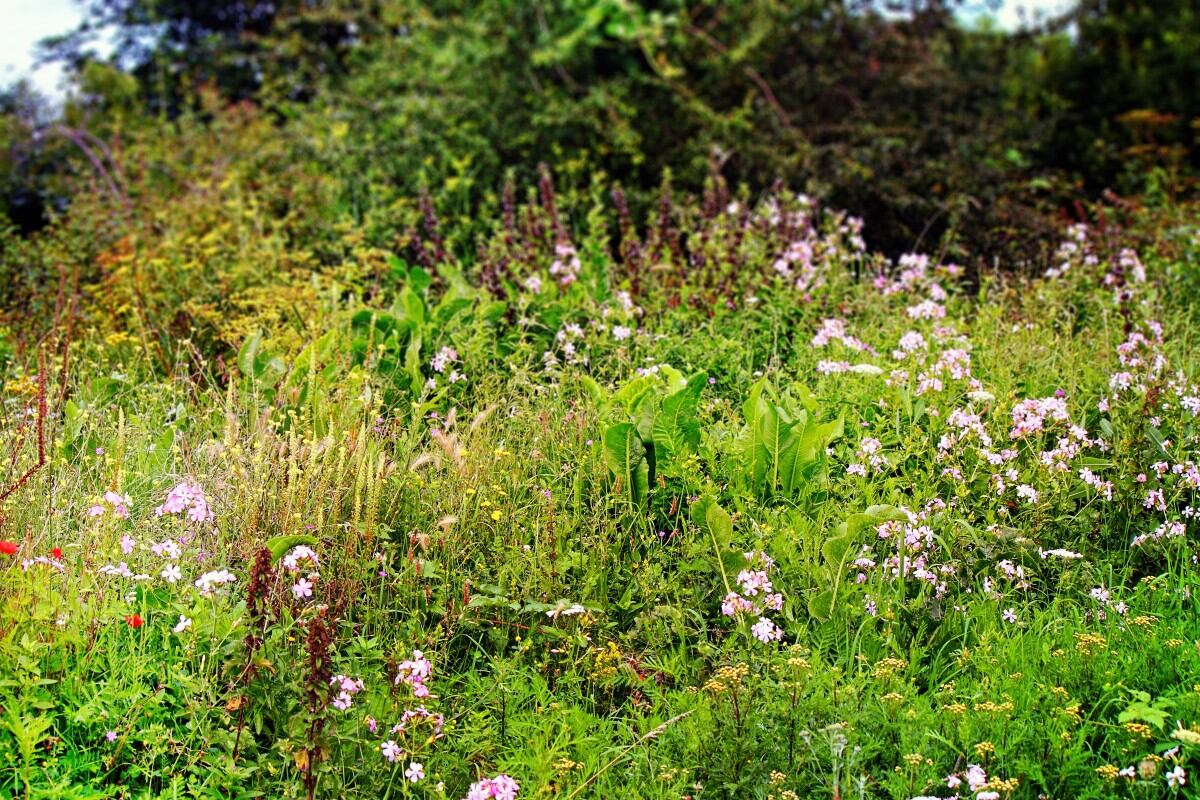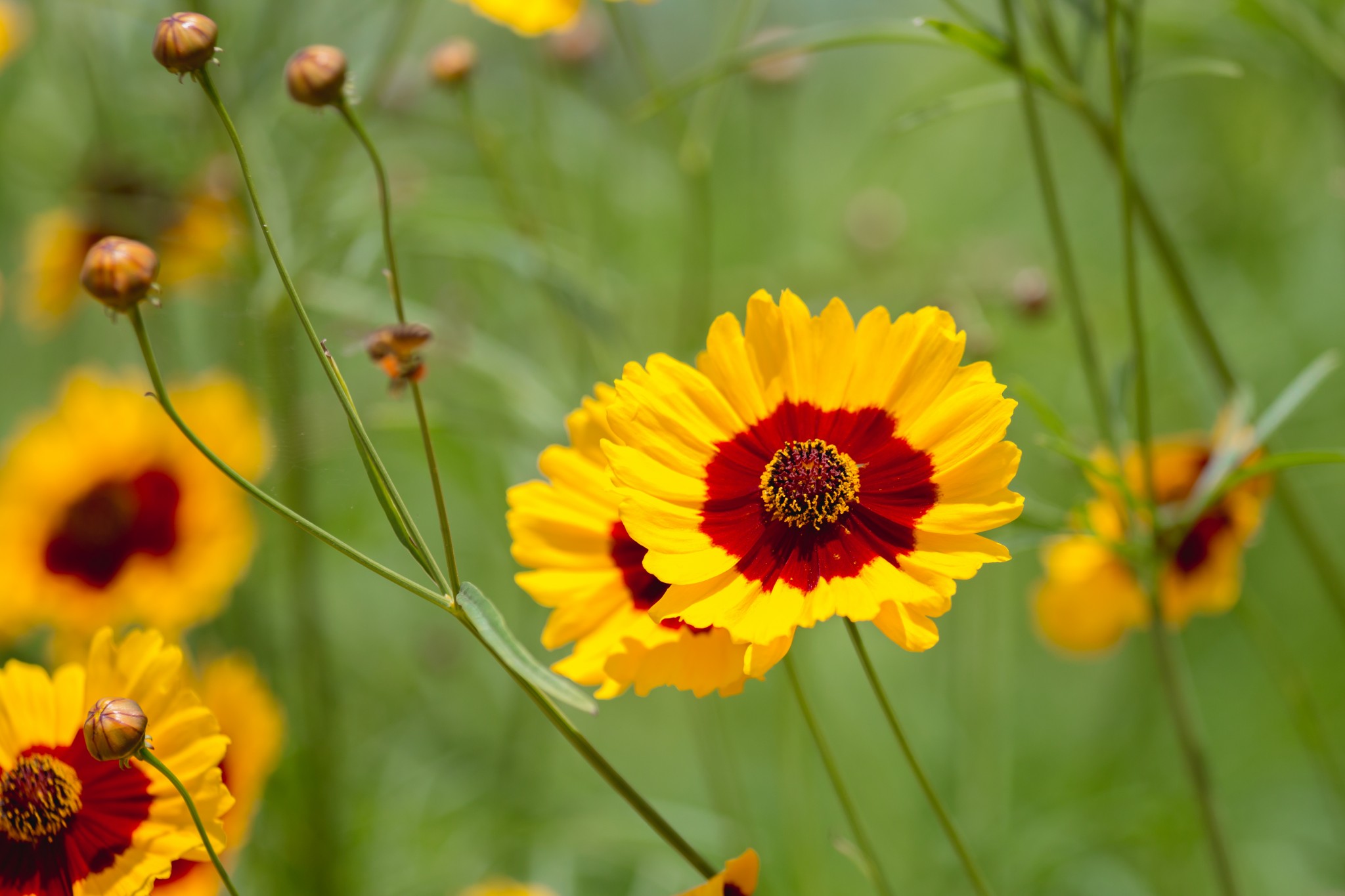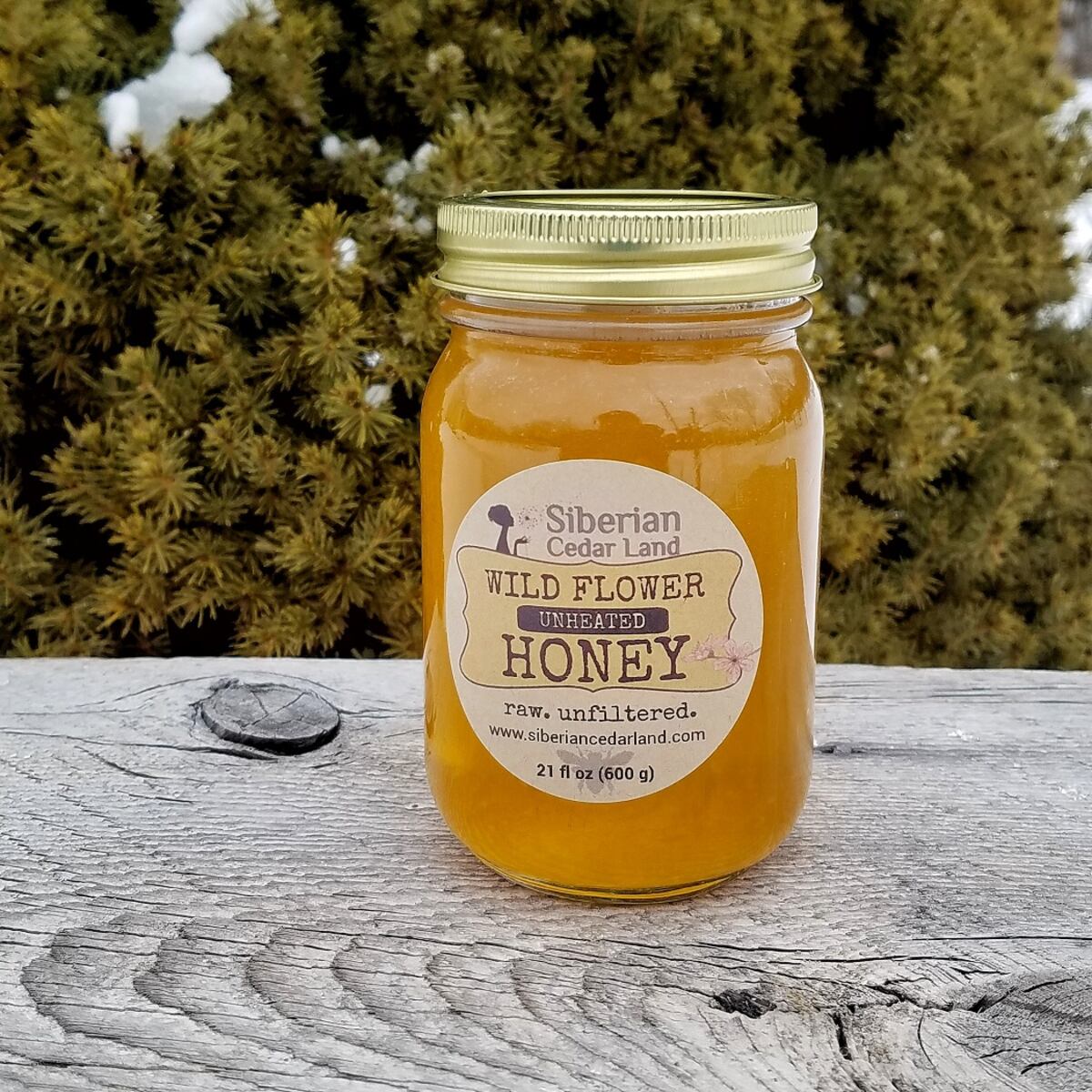Home>Gardening & Outdoor>Plant Care & Gardening Tips>What Is Considered A Wildflower


Plant Care & Gardening Tips
What Is Considered A Wildflower
Modified: March 24, 2024
Discover the beauty of wildflowers and learn how to care for them with expert gardening tips. Explore the world of wildflower gardening and plant care.
(Many of the links in this article redirect to a specific reviewed product. Your purchase of these products through affiliate links helps to generate commission for Storables.com, at no extra cost. Learn more)
Introduction
Welcome to the enchanting world of wildflowers! These vibrant and untamed blooms have captivated the hearts of gardeners, nature enthusiasts, and artists for centuries. In this article, we will embark on a journey to discover the beauty, diversity, and significance of wildflowers. From their unique characteristics to the various types and the essential role they play in ecosystems, we will delve into the captivating realm of wildflowers. Whether you are a seasoned gardener or simply an admirer of the natural world, join us as we unravel the secrets and wonders of these exquisite blossoms.
Key Takeaways:
- Wildflowers are untamed blooms that grow in the wild without human intervention, adding vibrant beauty to landscapes and supporting local ecosystems. They come in diverse types, colors, and shapes, showcasing nature’s resilience and beauty.
- Cultivating wildflowers in gardens supports biodiversity, pollinators, and creates visually captivating outdoor spaces. By nurturing wildflowers, we contribute to the preservation of native flora and the support of local wildlife.
Read more: What Is Considered Landscaping?
Definition of Wildflowers
Wildflowers, also known as native flowers or indigenous blooms, are plants that grow in the wild without human intervention. These captivating blossoms are not only visually stunning but also play a crucial role in maintaining ecological balance. Unlike cultivated flowers, which are carefully nurtured in gardens, wildflowers thrive in their natural habitats, adding a touch of untamed beauty to landscapes around the world.
One of the defining characteristics of wildflowers is their ability to adapt to diverse environmental conditions. These resilient plants have evolved to flourish in a wide range of climates, from the sun-drenched meadows to the shaded woodland floors, showcasing their remarkable versatility and hardiness. Furthermore, wildflowers are often integral components of local ecosystems, providing sustenance and shelter for various forms of wildlife, including bees, butterflies, and birds.
It’s important to note that the term “wildflower” encompasses a vast array of plant species, each with its own unique attributes and growth patterns. From delicate woodland blooms to hardy desert flora, the world of wildflowers is a tapestry of colors, shapes, and fragrances, offering a captivating glimpse into the diversity of the natural world.
Characteristics of Wildflowers
Wildflowers possess a myriad of captivating characteristics that distinguish them from traditional garden flowers. One of the most striking features of wildflowers is their adaptability to diverse environments. These resilient blooms have evolved to thrive in a wide range of habitats, including meadows, woodlands, prairies, and even rugged mountain slopes. Their ability to withstand varying climatic conditions, from scorching heat to chilly winters, exemplifies their remarkable resilience and versatility.
Furthermore, wildflowers often exhibit a captivating array of colors, ranging from soft pastels to vibrant hues, adding a breathtaking visual dimension to natural landscapes. Their diverse color palette not only enhances the aesthetic appeal of the surroundings but also serves as a vital attraction for pollinators, such as bees and butterflies, essential for the plants’ reproductive cycle.
Another defining characteristic of wildflowers is their role in supporting local ecosystems. These native blooms provide essential food sources for pollinators and wildlife, contributing to the delicate balance of the natural world. Additionally, many wildflowers have developed intricate root systems that help prevent soil erosion, making them valuable components of environmental conservation efforts.
Unlike some cultivated flowers, wildflowers often exhibit a remarkable degree of self-sufficiency, requiring minimal human intervention to thrive. Their ability to adapt, propagate, and endure in the wild underscores their resilience and intrinsic beauty. Moreover, wildflowers have a captivatingly diverse array of shapes and sizes, from delicate, intricate blossoms to robust, hardy blooms, showcasing the endless variety found within the realm of native flora.
Overall, the characteristics of wildflowers reflect not only their visual allure but also their vital ecological significance, making them a cherished and essential component of natural ecosystems around the world.
Types of Wildflowers
The world of wildflowers is a rich tapestry of diversity, encompassing a vast array of plant species with unique characteristics and habitats. From the enchanting blooms of woodland forests to the resilient flora of arid deserts, wildflowers offer a captivating glimpse into the natural world’s boundless variety. Here are some common types of wildflowers that grace landscapes across the globe:
- Meadow Wildflowers: These charming blooms thrive in open grasslands and meadows, painting the landscape with a kaleidoscope of colors. Species such as Black-Eyed Susans, Purple Coneflowers, and Coreopsis are beloved inhabitants of meadows, attracting pollinators and adding vibrant splashes of color to the countryside.
- Woodland Wildflowers: Found in the dappled shade of forests, woodland wildflowers exude an ethereal beauty. Trilliums, Bluebells, and Bloodroot are among the enchanting blooms that carpet the forest floor, creating a mesmerizing display of delicate blossoms amidst the towering trees.
- Desert Wildflowers: Thriving in arid landscapes, desert wildflowers are a testament to nature’s resilience. Species such as Desert Marigolds, Desert Lupines, and Globemallows defy the harsh conditions of their habitats with their vibrant blooms, transforming the desert into a floral wonderland during the brief periods of rainfall.
- Alpine Wildflowers: These hardy blooms brave the extreme conditions of high-altitude environments, adorning mountain slopes with their tenacious beauty. From the iconic Edelweiss to the delicate Alpine Forget-Me-Not, these alpine wildflowers thrive in the thin air and rocky terrain, showcasing nature’s ability to flourish in the most challenging settings.
These are just a few examples of the diverse array of wildflowers that grace our planet. Each type of wildflower has adapted to its unique environment, displaying a remarkable resilience and adding a touch of natural splendor to landscapes around the world.
When identifying wildflowers, look for plants that grow and reproduce on their own in natural environments, without human intervention. They often have bright, showy flowers and can be found in fields, meadows, and forests.
Importance of Wildflowers
Wildflowers play a vital role in maintaining the health and balance of ecosystems, making them indispensable components of the natural world. Their importance extends far beyond their visual allure, encompassing ecological, environmental, and cultural significance. Here are some key reasons why wildflowers are essential:
- Biodiversity and Ecosystem Health: Wildflowers contribute to biodiversity by providing essential habitats and food sources for a myriad of pollinators, including bees, butterflies, and hummingbirds. Their presence supports the intricate web of life within ecosystems, promoting the health and resilience of natural habitats.
- Soil Conservation: Many wildflowers have robust root systems that help prevent soil erosion, particularly in areas prone to degradation. Their extensive root networks stabilize the soil, reducing the risk of erosion caused by wind and water, thus safeguarding the fertility and structure of the land.
- Pollination and Food Production: Wildflowers are crucial for the pollination of crops and other plants, playing a direct role in food production. By attracting and supporting pollinators, these native blooms contribute to the abundance and diversity of fruits, vegetables, and other agricultural produce.
- Aesthetic and Cultural Value: Wildflowers have long been celebrated for their aesthetic appeal and cultural significance. They inspire artists, poets, and nature enthusiasts, enriching our lives with their beauty and contributing to the cultural heritage of communities around the world.
- Environmental Education and Awareness: Wildflowers serve as valuable educational tools, offering insights into the interconnectedness of ecosystems and the importance of conservation. By observing and learning about wildflowers, individuals gain a deeper understanding of the natural world and the need to protect and preserve native flora and fauna.
Overall, the importance of wildflowers transcends their visual splendor, encompassing their critical role in sustaining ecosystems, preserving biodiversity, and enriching human lives. Recognizing and safeguarding the significance of these native blooms is essential for the well-being of our planet and future generations.
Read more: What Is Considered Overhead In Construction
Cultivating Wildflowers
Cultivating wildflowers in gardens and natural landscapes offers a rewarding opportunity to enhance biodiversity, support pollinators, and create visually captivating outdoor spaces. Whether you are a seasoned gardener or a novice enthusiast, cultivating wildflowers can be a fulfilling and enriching endeavor. Here are some essential tips for successfully cultivating wildflowers:
- Research Native Species: Before embarking on your wildflower gardening journey, research native species that are well-suited to your region’s climate, soil, and sunlight conditions. Native wildflowers are adapted to thrive in their natural habitats and are often low-maintenance, making them ideal choices for garden cultivation.
- Choose the Right Location: Select a suitable location for your wildflower garden, ensuring that it receives adequate sunlight and has well-drained soil. Consider the natural habitats of the wildflowers you intend to cultivate and aim to mimic those conditions as closely as possible.
- Prepare the Soil: Prepare the soil by removing any weeds, rocks, or debris and loosening the earth to create a hospitable environment for wildflower seeds or seedlings. Avoid using chemical fertilizers or pesticides that can harm delicate wildflowers and the beneficial insects that rely on them.
- Sow Seeds or Plant Seedlings: Depending on the species, you can sow wildflower seeds directly into the prepared soil or start with nursery-grown seedlings. Follow the specific planting instructions for each type of wildflower, ensuring proper spacing and depth for optimal growth.
- Provide Adequate Water and Care: While many wildflowers are resilient once established, it is essential to provide consistent moisture during the initial stages of growth. Water your wildflower garden as needed, especially during dry spells, and monitor for any signs of pests or diseases that may require attention.
- Support Pollinators: Wildflowers are valuable sources of nectar and pollen for pollinators, so aim to create a welcoming habitat for bees, butterflies, and other beneficial insects. Avoid using chemical insecticides and consider incorporating native flowering plants that bloom at different times to provide continuous food sources for pollinators.
Cultivating wildflowers not only adds natural beauty to your surroundings but also contributes to the preservation of native flora and the support of local wildlife. By nurturing wildflowers in your garden, you can play a meaningful role in promoting biodiversity and creating a thriving, sustainable ecosystem.
Conclusion
As we conclude our exploration of wildflowers, we are reminded of the remarkable beauty, resilience, and significance of these captivating blooms. From their diverse array of types and characteristics to their essential role in supporting ecosystems and enriching human lives, wildflowers stand as cherished symbols of nature’s enduring splendor.
By embracing the cultivation and preservation of wildflowers, we not only enhance the visual appeal of our surroundings but also contribute to the well-being of the planet. Through their support of pollinators, soil conservation efforts, and cultural enrichment, wildflowers offer a multitude of benefits that extend far beyond their enchanting blossoms.
As stewards of the natural world, we have the privilege and responsibility to safeguard the diversity and vitality of wildflowers for future generations. Whether in our gardens, meadows, or natural landscapes, the presence of wildflowers serves as a testament to the interconnectedness of all living beings and the enduring beauty of the Earth’s flora.
Let us continue to celebrate and cultivate wildflowers, honoring their intrinsic value and the profound impact they have on our lives and the environment. Through our collective efforts in preserving and nurturing these native blooms, we can ensure that the legacy of wildflowers endures, enriching the world with their timeless elegance and ecological significance.
Frequently Asked Questions about What Is Considered A Wildflower
Was this page helpful?
At Storables.com, we guarantee accurate and reliable information. Our content, validated by Expert Board Contributors, is crafted following stringent Editorial Policies. We're committed to providing you with well-researched, expert-backed insights for all your informational needs.















0 thoughts on “What Is Considered A Wildflower”